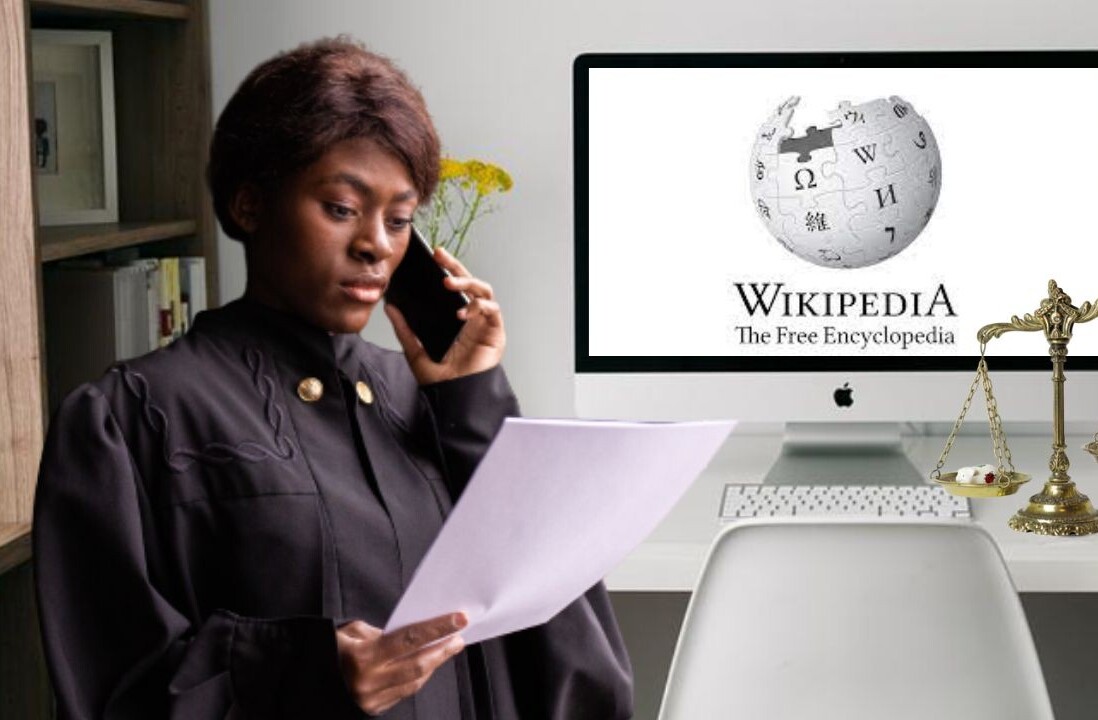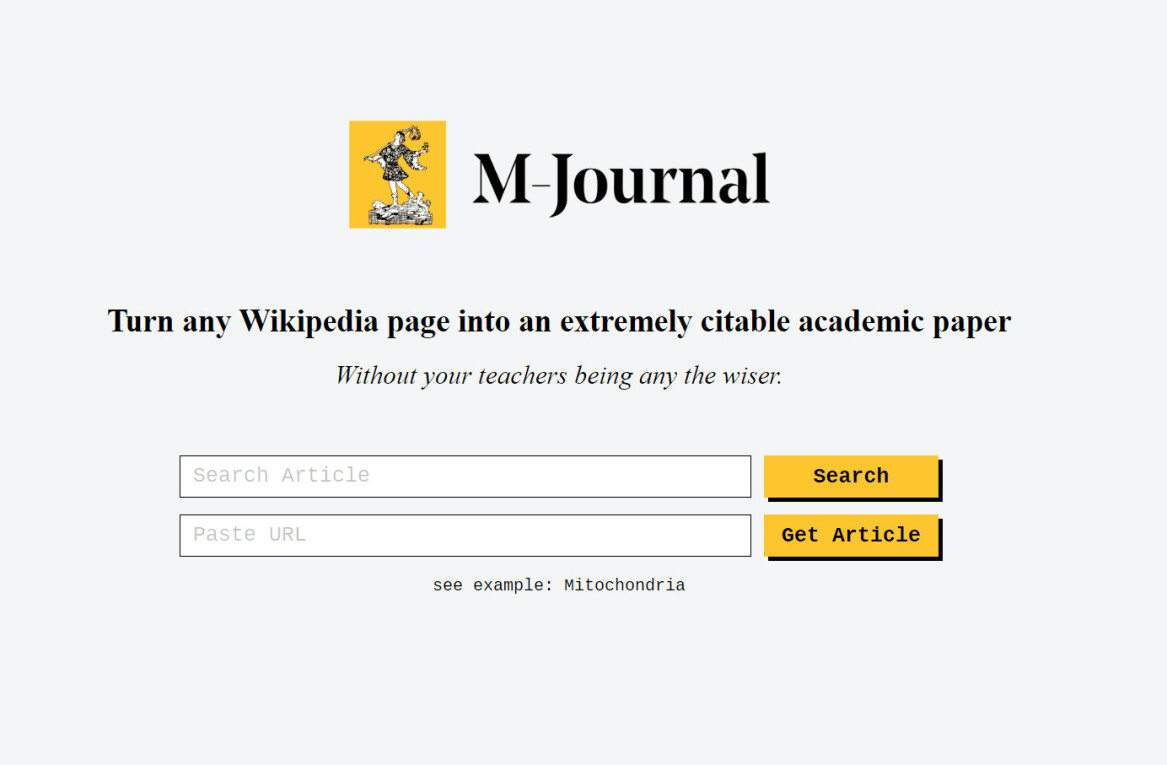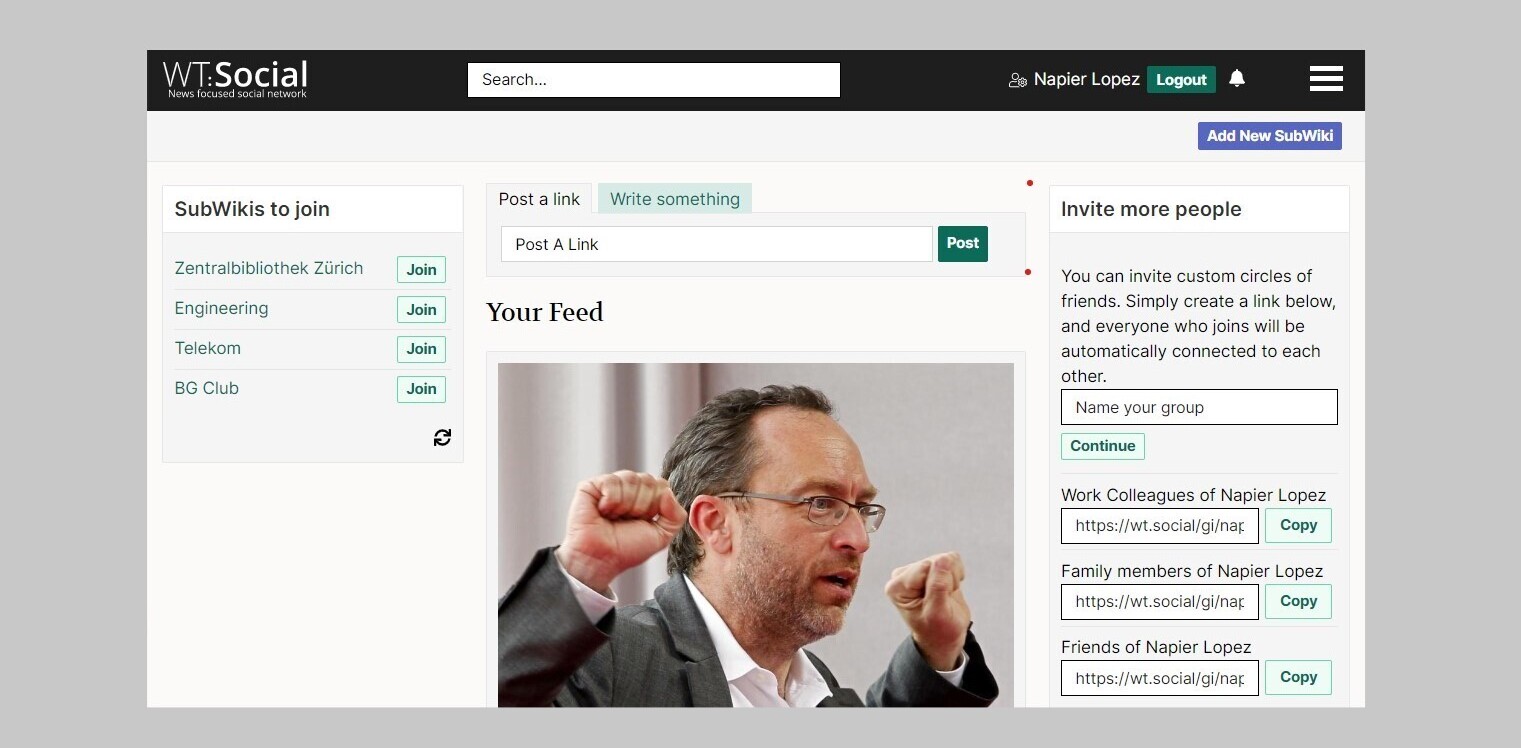
Imagine a world without Wikipedia: a place where this encyclopaedic behemoth couldn’t be scanned by anxious school students keen to speed up their homework by rewriting the first four paragraphs of hard-working Wikipedia editors. Can you envision University undergraduates actually picking up a dead-tree media copy of Encyclopaedia Britannica, or actually physically visiting a brick and mortar library to ferret out original sources? Neither can I – especially when considering the fact Wikipedia is now one of the most established and well patronised reference websites in the contemporary world.
Not only is Wikipedia one of the most used resources for data-gathering and seemingly instantaneous information retrieval – it’s also free to use with no advertisements clogging up the interface (except those quirky requests to donate). So just how does such a key knowledge resource function, and who are the faces behind such an indispensable modern take on the traditional Encyclopaedia?
Wikipedia’s origins
Imagine a world in which every single person on the planet is given free access to the sum of all human knowledge. That’s what we’re doing.
In 1994, Ward Cunningham created a website format previously unknown to Internet users at the time: one that would drive knowledge creation and collation to new heights. This website was called a Wiki.
This style of website propelled the user into the collaboration spotlight, by encouraging anyone to update and edit internet-hosted content in real time. Although this early version of collaborative content creation now seems standard, remember that this was both pre social media and prior to the multitudes of current platforms and applications that cater for users who are keen to create, edit and share information in an aggregation space.
On his personal web page, Ward says of the Wiki:
The idea of a “Wiki” may seem odd at first, but dive in, explore its links and it will soon seem familiar. “Wiki” is a composition system; it’s a discussion medium; it’s a repository; it’s a mail system; it’s a tool for collaboration. We don’t know quite what it is, but we do know it’s a fun way to communicate asynchronously across the network.
In 2000, this original concept of tying large amounts of content to an open, networked based collation system propelled Jimmy Wales and Larry Sanger to create Nupedia. Nupedia (unlike Wikipedia) was initially created as a for-profit project that acted as an online encyclopaedia funded by Bomis. The project had lofty ideals: it was to be free to access for all users and all content was to be academically robust, with a mandatory peer-review policy as well as a 7-step review process.
From the outset, Nupedia had performance problems. In its first year, Nupedia had only 20 or so articles approved for publication, with as many as 150 drafts stagnating in the yet-to-be published vault. It was also assumed by the founders of Nupedia that scholars and experts would want to voluntarily provide high-end content, regardless of the absence of incentives to do so. Then there was the infighting between Sanger and Wales, with Sanger determined to adhere strongly to the content control of all published material and demanding more reliable content (Sanger would go on to create a more academically-robust alternative called Citizendium that is still in operation).
http://www.youtube.com/watch?v=SPtMMPE1IDQ
What further added to the demise of Nupedia was the fact that both Sanger and Wales wanted to adopt the Wiki format in order to utilise elements they thought would act to enhance the existing Nupedia model, such as ease of editing, less restricted review processes and a more inclusive and open approach to information organization. Thus, Wikipedia was born as a side-project to help enhance Nupedia – instead, it ended up eclipsing it and providing the trigger for Nupedia’s eventual demise.
When the non-profit Wikipedia project went live in January 2001, both Sanger and Wales had no idea that this side-project would become the force it is today. By 2002, this knowledge repository contained upwards of 20,000 entries: at the end of 2006, it had reached the 1 million article mark. Wikipedia itself provides the latest up-to-date stats regarding the current statistics concerning the present contributor base and popularity:
As of September 2012, Wikipedia includes over 23 million freely usable articles in 285 languages, written by over 36 million registered users and numerous anonymous contributors worldwide. According to Alexa Internet, Wikipedia is the world’s sixth-most-popular website, visited monthly by around 12% of all internet users.
A more in-depth “report card” can be accessed via Wikipedia’s umbrella organisation, the Wikimedia Foundation.
Article creation
According to Wikipedia’s “Five Pillars” Principles, any user can create, edit and modify articles as long as they are encyclopaedic in nature – any other types of articles including advertising, advocacy, vanity tracts, or directory/business listings aren’t acceptable. The preferred tone of entries is neutral, with balance, impartiality and multiple points of view being high up on the Wikipedia preference agenda.
Users are encouraged to create an account before starting to craft an article. By creating an account and logging in prior to any entry creation, a user ensures that their IP address will not be logged. A Wikipedia user can choose to remain anonymous by utilizing a unique nickname, or can use their real name if desired. Readers are not required to log in to read any hosted content.
In order to make a Wikipedia account, a new contributor selects the “Create An Account” link at the top right-hand side of a Wikipedia page. After providing an individual user name and password, the user then completes a captcha test: if the contributor has problems with replicating the captcha, they have the option to request an account directly.
In order to log in to your newly-created Wikipedia account, the contributor must ensure their browser accepts cookies (and not of the home-baked variety, either) and use the “Log In” link next to “Create An Account”. From here, there is an option for supplying an email address so other contributors can contact you. Account creation also allows a user to make a User Profile, upload images and obtain notifications if an article authored by you has undergone any modifications.
Topic selection is important when creating a Wikipedia article. Be sure to check whether you’ll be simply duplicating existing Wikipedia content with your intended topic – if you use Wikipedia’s internal search engine to check for present topics, make sure to double-check using different spelling variations or abbreviations.
An interesting way of conjuring up ideas for topics is to type “WP:RA” into the search bar located at the top right of any Wikipedia page, which will allow you to view a list of Requested Articles. If you do decide on creating a brand spanking new article with a specific title but find there’s already an entry covering similar territory but on a different topic, you must distinguish your title to differentiate it. This process is called Disambiguation: an example would be “Battlestar Galactica” (BSG), which is listed on its Wikipedia disambiguation page as linking to various entries all covering the BSG franchise, including the original 1970 series and a separate entry for the 2004 Series remake.
All new articles should be constructed with what Wikipedia terms as ‘verifiable accuracy’ and must revolve around notable subject matter. Verifiable accuracy means that the information contained in any Wikipedia entry must be able to be confirmed via links to extraneous references and sources that denote authority. Such sources include publications deemed reliable, such as books from established publishing houses or traditional newspapers. This is especially crucial when a user creates an article based on a topic or subject that is controversial and/or one that concerns a living individual. When citing sources, use “WP:CITE” (typed in the search bar) to access acceptable citations methods.
When you’re sure your topic hasn’t already been covered on Wikipedia, you have all required references on hand and can construct a neutral, non-vanity based, encyclopaedic worthy entry, now’s the time to visit The Sandbox. The Sandbox allows a user to become familiar with the conventions and mark-up language Wikipedia uses to format all content. The Sandbox is a must for new users, as the tools you’ll need to create an entry are quite complex with a substantial learning curve involved. Another crucial step include always previewing your entry before hitting “Save Page” to stop any embarrassing format-based (or factual) mistakes from reaching readers.
Once your new article has been published, it’s important to continually update the content. It’s also a good idea to make sure your article has relevant Wikipedia entries linking directly to it. If no other entries connect to your own, there’s a danger that your page will be considered and tagged as an Orphaned Article. Adding links from other articles to yours is a suggested way of “de-orphaning” isolated entries.
Plagiarism isn’t tolerated within Wikipedia, with offending content being removed immediately. Text included in Wikipedia is copyrighted by editors and article creators, which is then licensed to the public under liberal licenses such as the Creative Commons Attribution-Sharealike 3.0 Unported License the GNU Free Documentation License. Fair use rules apply to non-free content, with preference given to material that adheres to free content specifications. As the English Wikipedia Content Guidelines state:
Wikipedia’s goal is to be a free content encyclopedia, with free content defined as content that does not bear copyright restrictions on the right to redistribute, study, modify and improve, or otherwise use works for any purpose in any medium, even commercially. But because free as in cost and free as in freedom are two entirely different concepts, images freely available on the Internet may still be inappropriate for Wikipedia. Any content not satisfying criteria, such as ‘non-commercial use only’ images, images with permission for use on Wikipedia only, or images fully copyrighted are therefore classified as non-free.
Wikipedia’s Policies and Guidelines are fashioned by community members who assist in conflict resolution and general article maintenance, though the very principles that govern the organisation are in a state of constant flux. Users can create articles without knowing each and every rule, with common sense being a key indicator of how article creators should orient their entries.
Of the multitudes of articles created on Wikipedia every day, only a few of those make it through the deletion process, with many being flagged for speedy deletion. Many erasures occur due to entries being perceived as non-notable. There have been many controversial deletions of entries that have been marked as non-notable by over-eager Wikipedians, which has prompted a lively and continuous commentary regarding whether the revolving entry creation and deletion progress is entirely functional.
Despite Wikipedia’s guidelines that allow anyone to create articles, often there is a select section of the population that tend to generate and edit entries: for the English version of Wikipedia, that includes content creators who have specific profile parameters based on gender, race and age biases.
The editing process
Before editing any Wikipedia article, users are expected to log in to their account. This makes the process of tracking and recording article changes easier, with any edits being assigned to your specific username. As with article creation, if you choose not to register an account Wikipedia identifies and logs all edits made by your IP address by noting it publically in an article’s edit history.
To begin editing, select the “Edit” option on the top-right side page of the entry (sandwiched between the “Read” and “View history” tabs). The page containing the article text will pop up complete with editable areas showing. A substantial range of editing tools are available at the top of the edit window. When editing, be mindful of mark-up conventions and existing content: legitimate edits that update or add content will be viewed as favourable, whereas obvious defacement or any addition of inappropriate material will be reversed ASAP. There may also be specific inline instructions evident in the editable text, such as “<!–Members in order indicated by Wikipedia guidelines. Do not change.–>” (so don’t).
If you intend on editing an article and can’t see the “edit” tab, it may be due to the fact that particular article has undergone substantial vandalism, where devious “editors” have repeatedly attempted to defame and/or vilify persons, or negatively slant content. This means the article is unable to be edited by any member of the general public and is protected by Wikipedia administrators. Administrators can also invoke “Creation Protection” if a deleted page has been continuously recreated and deleted. Creation protected content is often colloquially referred to as a salted page.
Edits can be made to individual article sections by pressing any of the “edit” links available inline on the right hand side of Wikipedia entries. This handy Wikipedia feature shows only the particular section you want to edit, rather than the entire article. When you’ve finish with your edits, make sure to write a quick summary in the edit summary box located directly under the main editing window. Now hit the “Show Preview” button to see your edits before publishing to Wikipedia, or “Show Changes” and compare your edits against previous versions. Only after taking these steps should you finally hit save, which will replace the current page with your own edited copy.
If you change your mind and want to remove your edits, Wikipedia saves all document edits under the “View History” tab and any member of the public can view (and revert to) preceding versions. A recently released feature called “Article Feedback” also prods readers to comment with editing feedback, which (according to the following Video from the Wikimedia Foundation) apparently prompts Wikipedia readers to swap to an active contributor role.
Discussion pages (also known as Talk pages) provide editors with a forum to discuss changes and particular criticisms or questions related to articles, as well as overall quality of content. Talk pages are accessible for most Wikipedia pages via a tab on the top left side. To contribute to talk pages, press the “New Section” tab and add to the discourse presented there. It’s an established convention to sign Talk Pages messages with a signature by typing “~~~~” (4 tildes). This ensures that you’re correctly identified as the author, with your username and time stamp appearing after your contribution. When responding to another comment on a talk page, these replies are indented in a thread, with staggered levels of indentation indicating different replies.
To be notified of any activity on talk pages you’ve commented on, you can add the specific page to your watchlist. Talk pages are also available for Wikipedia’s guidelines, rules and policies. Contributor’s user pages can also have talk pages, with areas available for message creation and notation. When a registered Wikipedia user is messaged in this way, they will be notified when they next log in.
Wikipedia provides new editors with a convenient cheat-sheet in order to deal with established mark-up and other editing conventions. Remember to cite your sources just as you would if you were creating the article from scratch.
http://www.youtube.com/watch?v=Hy7a9pNbiA8
There’s also a simplified ruleset that outlines just how Editors should conduct themselves when editing, including suggested civility levels, taking care when undoing other editor’s work, understanding and engaging in dispute resolution, and:
…consider[ing]the person on the other end of the discussion as a thinking, rational being who is trying to positively contribute to Wikipedia. Even if you’re convinced that they’re an [insert insult of your choice], still pretend that they’re acting in good faith. Ninety percent of the time you’ll find that they actually are acting in good faith (and the other ten percent of the time a negative attitude won’t help anyway). Be gracious. Be liberal in what you accept, be conservative in what you do. Try to accommodate other people’s quirks as best you can, while trying to be as polite and straightforward as possible.
Edits appear on Wikipedia article in real-time: edits based on up-to-date occurrences may appear instantaneous, such as when celebrity death or a natural disaster occurs. Editors may race to include updates for the love of immediacy, or for the credit associated with being first to identify newsworthy material. Editors may also make alterations to specific articles for more disreputable reasons, such as recent allegations that suggest that two high profile Wikipedia-In-Residence holders have been underhandedly promoting articles (and favourably slanting edits) for profit. One of the alleged contributors, Roger Bamkin, is also a Wikimedia UK Board Member, with the other (Max Klein) running a SEO company that’s associated with Wikipedia.
There’s no doubt that Wikipedia is a massive influence in terms of current knowledge acquisition. Wikipedia offers the public a wonderful knowledge-enhancement platform through the diversity of contributions, as well as the quantity of its content. What remains to be seen is the longevity of such an online repository that functions with potentially corruptible editing progresses and systemic bias: will immediacy value alone be enough to keep Wikipedia perpetually relevant?
Image Credit: Mandel Ngan/Getty Images
Get the TNW newsletter
Get the most important tech news in your inbox each week.





